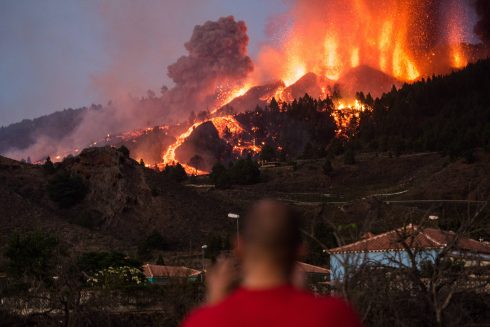THOUSANDS of honey bees in five hives have survived being buried in volcanic ash on la Palma for an incredible 50 days.
The beekeeper had been forced to leave the area when the Cumbre Vieja volcano on the Canary island erupted back in September.
He finally managed to return 50 days later, and fearing the worst, he dug the hives out from what he thought was going to be an ashy grave.
But when he opened the hives, he found tens of thousands of bees still alive. They had apparently used a sticky substance they make from resins bees collect from plants to seal the hives and stop the ash getting in. Called propolis it is also known as ‘bee glue’.
They then survived by eating honey, and as the ash is light and porous, enough air entered the hives for the insects to survive.
But while the bees have survived, other creatures have not been so lucky.

The Olive Press last month reported how wildlife on the island is facing a crisis. Manuel Nogales from the The Spanish National Research Council (CSIC), who has been studying biodiversity in the area for 40 years, hammered home the disastrous effects of the eruption, saying: “For wildlife, the scenario is that of a nuclear war.”
Nogales, who has been visiting the restricted area daily to observe the impacts on the environment, noted that the animals ‘are very scared’ and that ‘all the fauna have changed their behavior’.
Much of the flora has also been affected too, with around 40% wilted and severely dehydrated.
This has had a knock-on effect on released domestic animals which are having to eat burnt and ash covered vegetation, which Nogales says will harm them.
And he added that animals have also fled the area with only 10% of the usual native wildlife being spotted.
The researcher described how the fauna of the area primarily consists of reptiles (especially lizards) and birds, and it is the lizards who have ‘practically disappeared from the terrain’.
This has affected the entire food-chain as lizards make up the bulk of the diet of many birds of prey, and caused changes in behaviour. The biologist witnessed kestrels trying to capture smaller birds which is ‘not normal’ in the Canary Islands.
READ MORE:
- Man arrested after trying to sell items donated to victims of La Palma volcano
- Mission impossible: Drone rescue operation given green light to attempt to save three dogs trapped by lava in La…
- Volcano latest: New lava threat forces evacuation of 700 more residents on La Palma in Spain’s Canary Islands








